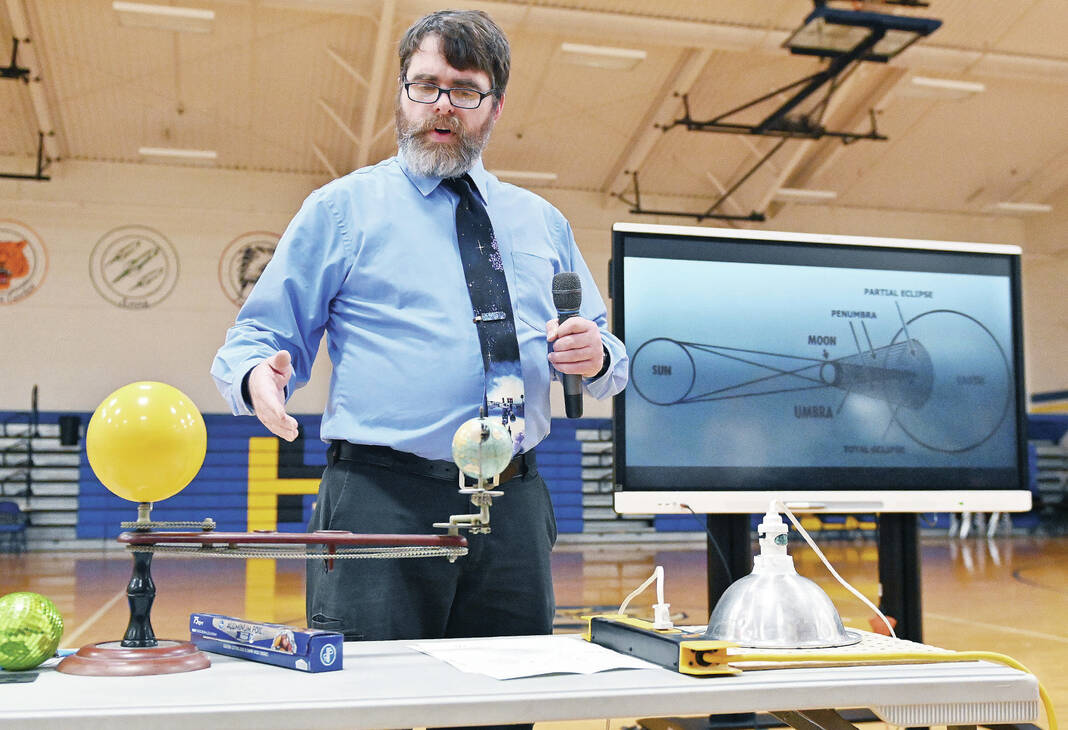
Russia Local School Physical Sciences teacher Eric Sullenberger, of Troy, uses an old model of the sun, moon and Earth to describe what will happen during the total solar eclipse that will be passing over Russia on Monday, April 8. Sullenberger gave his solar eclipse talk at the Russia Local School on Tuesday, March 19.
Luke Gronneberg | Sidney Daily News
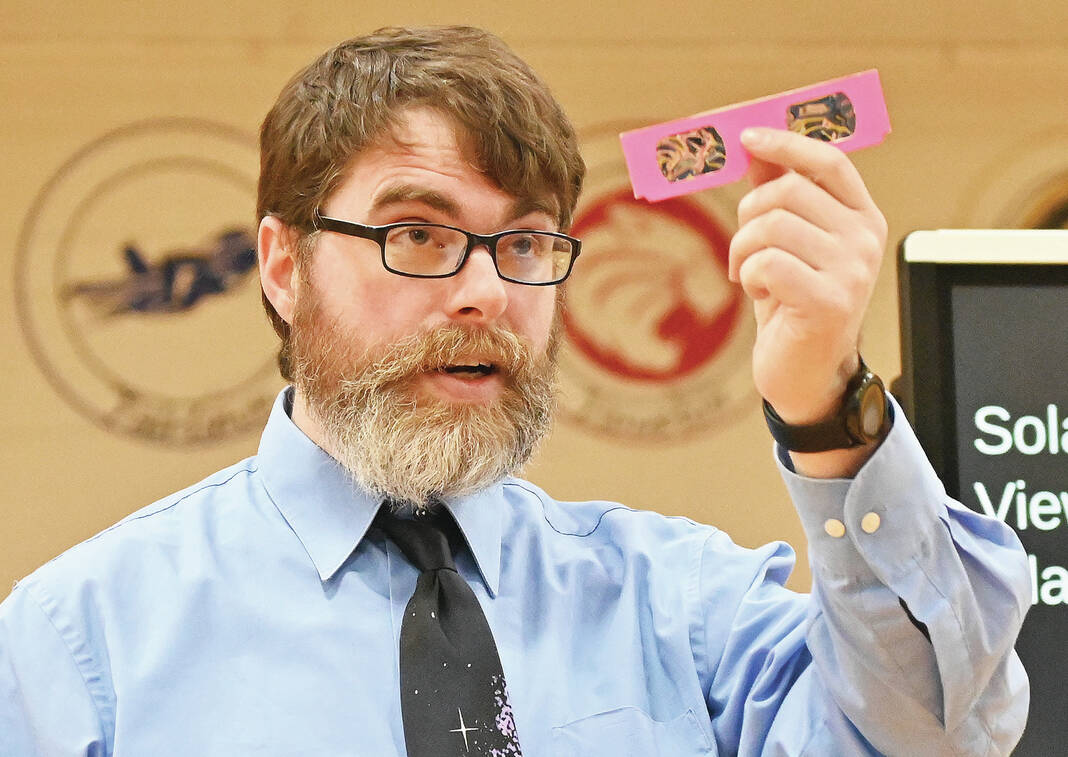
Russia Local School Physical Sciences teacher Eric Sullenberger, of Troy, holds up a pair of glasses that can be used to safely view the total solar eclipse that will be passing over Russia on Monday, April 8. Sullenberger gave his solar eclipse talk at the Russia Local School on Tuesday, March 19.
Luke Gronneberg | Sidney Daily News
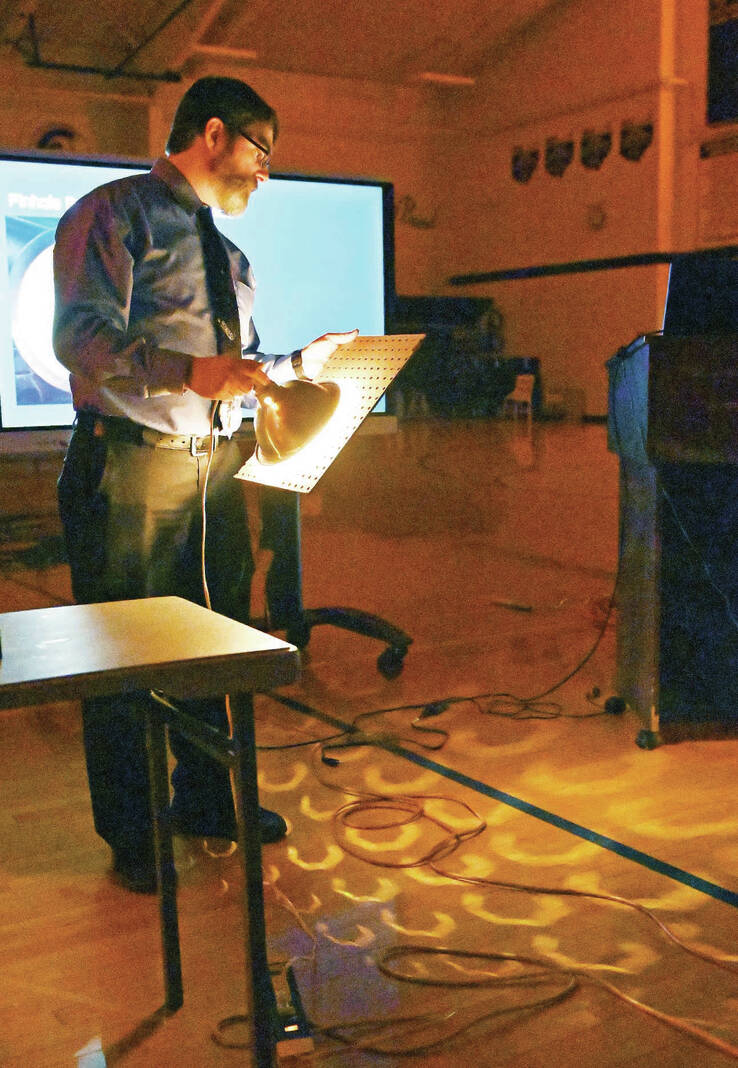
Russia Local School Physical Sciences teacher Eric Sullenberger, of Troy, demonstrates how people can use pin holes to project miniature eclipse shadows during the total solar eclipse that will be passing over Russia on Monday, April 8. Sullenberger gave his solar eclipse talk at the Russia Local School on Tuesday, March 19.
Luke Gronneberg | Sidney Daily News
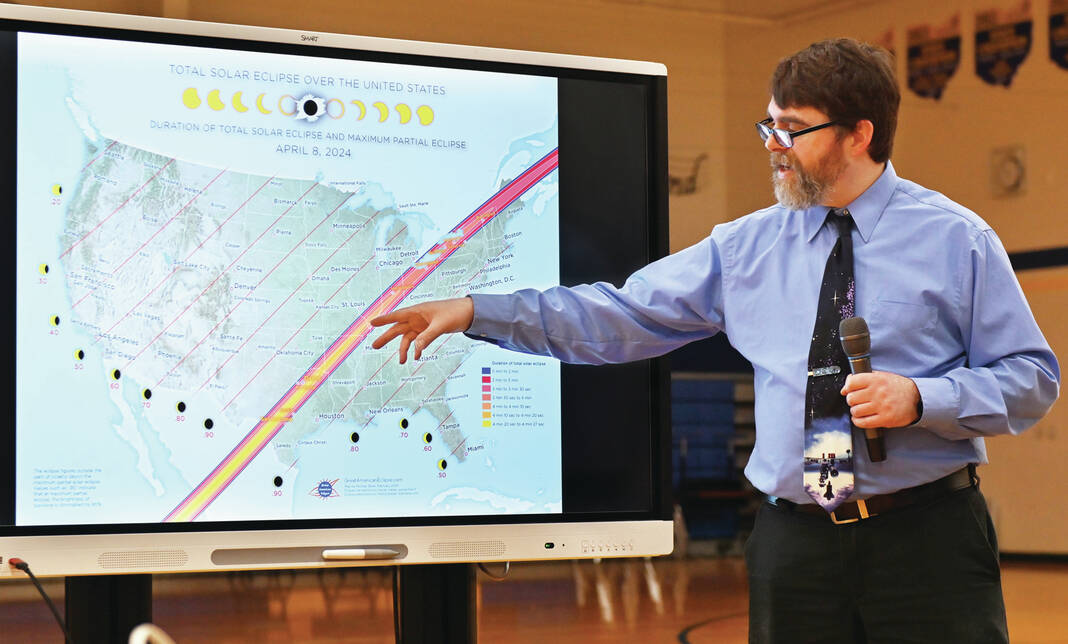
Russia Local School Physical Sciences teacher Eric Sullenberger, of Troy, points at the path of totality that will be crossing the U.S., including the village of Russia on Monday, April 8. Sullenberger gave his solar eclipse talk at the Russia Local School on Tuesday, March 19.
Luke Gronneberg | Sidney Daily News
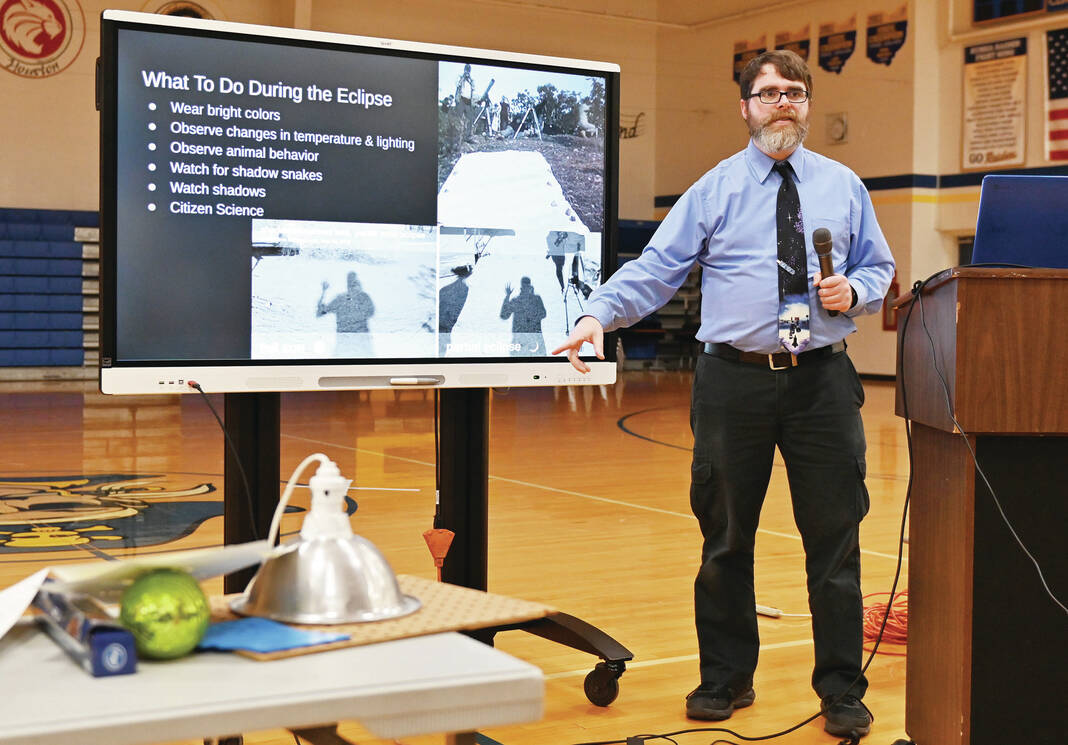
Russia Local School Physical Sciences teacher Eric Sullenberger, of Troy, talks about how shadows will be affected during the total solar eclipse that will be passing over Russia on Monday, April 8. Sullenberger gave his solar eclipse talk at the Russia Local School on Tuesday, March 19.
Luke Gronneberg | Sidney Daily News
By Charlotte Caldwell
RUSSIA — Russia Physical Sciences teacher Eric Sullenberger shared his passion and knowledge of solar eclipses with a presentation on March 19.
Sullenberger has been interested in science and astronomy from an early age thanks to his dad, who showed him the location of stars and explained an eclipse to him before a total lunar eclipse.
Sullenberger applied for and received three grants totaling $11,500 for the purchase of science equipment so students and the community could participate in citizen science on April 8.
One grant he received for $5,000 called the Jay M. Pasachoff Solar Eclipse Mini-Grant provided Sullenberger’s plan for the money: “Citizen Science from Russia with Love — Russia Local School, serving K-12 students, lies in the path of totality for the April 8 solar eclipse. Eric Sullenberger, a science teacher who also happens to be an amateur astronomer, will use our mini-grant to enhance the eclipse event for students and the community. The grants covers the purchase of data sensors, telescopes, cameras, and other equipment that will be used to engage the public through educational events, data collection, and citizen science projects. The community, supported by the Village Council, is gearing up for a significant turnout.”
Sullenberger went to Missouri in 2017 to view the total solar eclipse, and if the weather isn’t ideal in Shelby County on April 8, he will travel again to get a better view. He will have the equipment he purchased outside of Russia School for the public to use if he doesn’t travel. He said the eclipse is worth seeing with a group of people, and if the weather is bad, go outside anyway, because there will still be visible effects of the eclipse.
The last solar eclipse before 2017 in the U.S. was in the 1970s, and the next U.S. opportunity is around 2044. Ohio won’t get another solar eclipse opportunity until 2099, and the last Ohio solar eclipse was in 1806.
Some safe viewing guidelines provided in the presentation were:
• Never look directly at the sun without appropriate solar filters. This includes looking at it through cellphone cameras, professional cameras and telescopes.
• Never look at the sun under magnification without filters.
• Solar filters must be on the front end of the optical device.
• Welder’s masks must be rated 13 or 14.
• Solar viewing glasses should be ISO 12312. All Russia students will get a free pair of solar viewing glasses. Sullenberger mentioned if reusing glasses from the last eclipse, test them first. If you can see through them, they’re not usable. Look up at the sun quickly; if you see spots, they’re not usable.
• Use pinhole viewers by aiming them toward the sun and looking down at a flat surface. Sullenberger also demonstrated using a kitchen strainer and punching nail-size holes in a piece of paper. Kids can make a craft out of it by punching their names or a message on the paper.
Activities to do during the solar eclipse to get the full experience include:
• Wear bright colors. The Purkinje Effect explains that your eye won’t be able to adjust to the darkness that quickly, so reds will appear dark and greens and blues will pop.
• Observe changes in temperature and lighting.
• Observe animal behavior. Keep pets inside.
• Watch for “shadow bands” or “shadow snakes.” “Shadow bands are thin wavy lines of alternating light and dark that can be seen moving and undulating in parallel on plain-colored surfaces immediately before and after a total solar eclipse,” according to NASA. Scientists have theories about what causes it, but not enough data to explain it completely. Sullenberger recommended viewing them on a sheet or poster board.
• Watch shadows. Sullenberger said shadows will go from being blurry to sharp.
• Participate in citizen science. Sullenberger recommended the following citizen science apps:
Globe Observer — make environmental observations that complement NASA satellite observations to help scientists studying Earth and the global environment.
Sunsketcher — photograph the eclipse for science and you can get the pictures after. Mass participation will allow scientists to analyze the pictures together and measure the shape of the sun.
iNaturalist — Helps identify plants and animals while generating data for science and conservation.
Graphical Analysis — Collect, graph and analyze data from Vernier sensors.
Solar Eclipse Timer — Announces key eclipse moments out loud, like when to take solar glasses off and what to watch for during the eclipse.
The website https://www.timeanddate.com/eclipse/in/usa?iso=20240408 will also show exact times of the eclipse down to the second based on exact location.
Activities to do during totality specifically include:
• Take off solar viewing glasses.
• Watch for the Diamond Ring effect and Baily’s Beads — which is seeing tiny bits of the sun just before totality and just before it ends.
• Look at the horizon.
• Look for stars, planets, and comets.
• Enjoy it. Don’t try to do too much.

